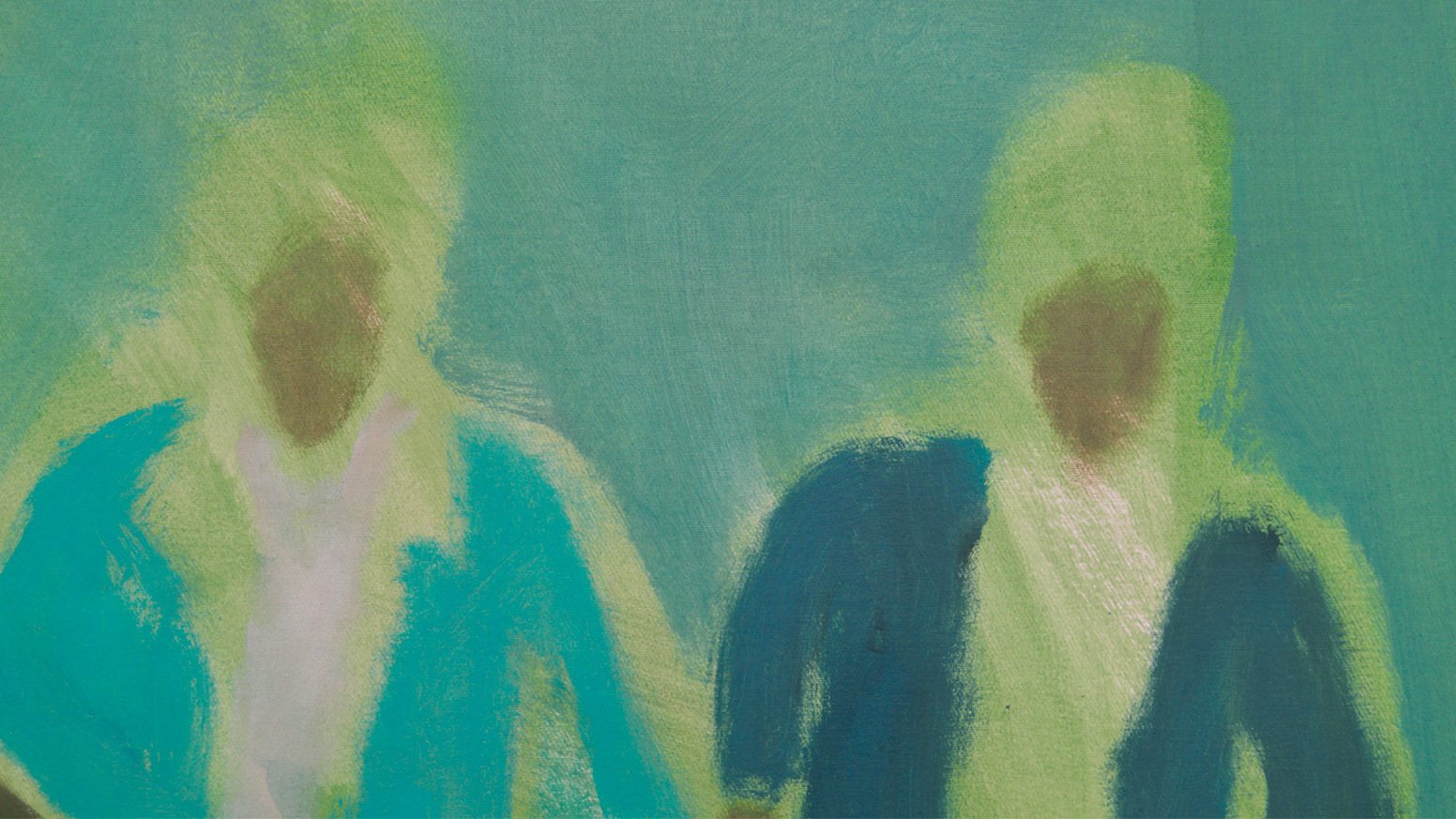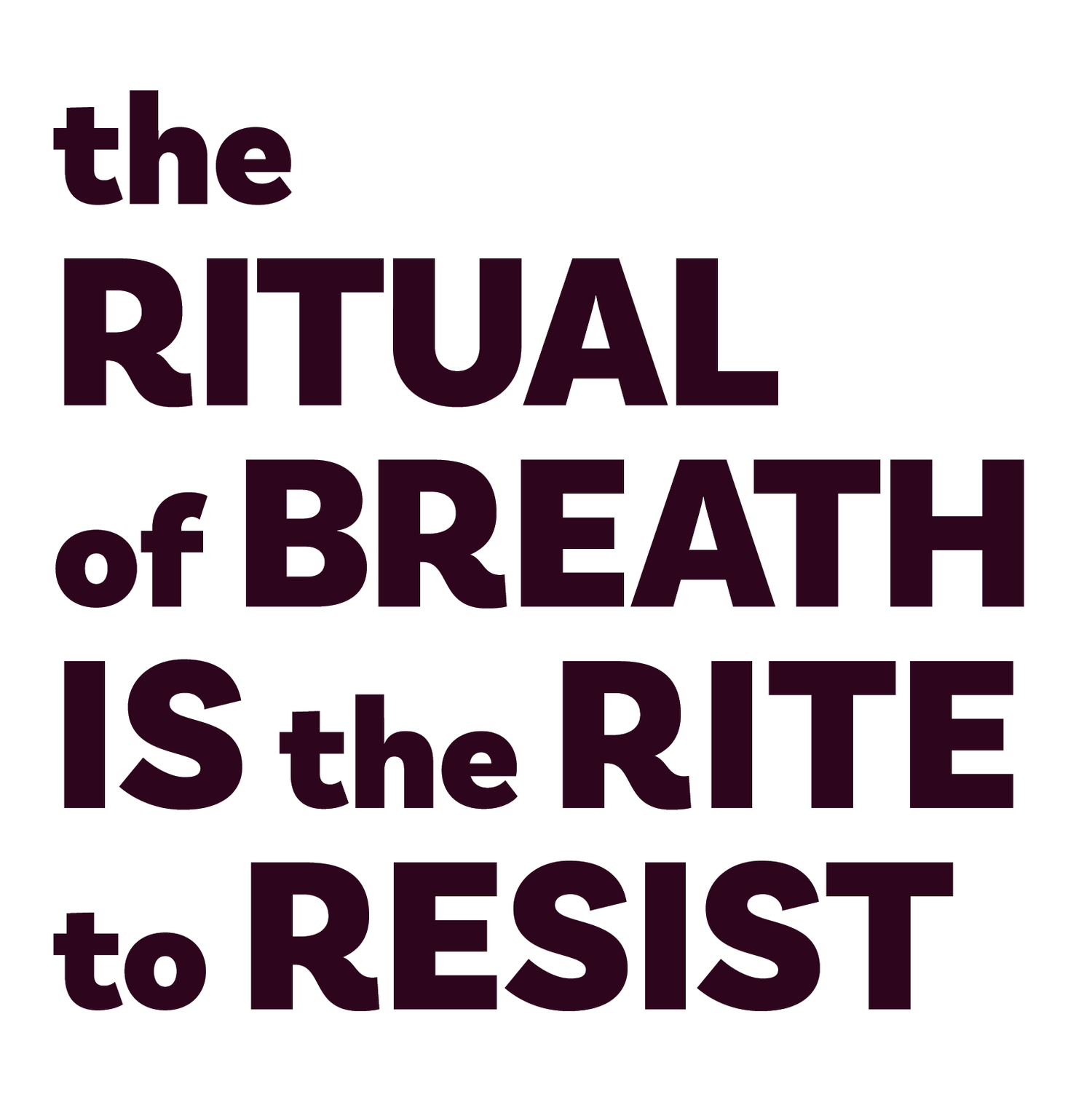
Healing Rituals
As the Ritual of Breath was being developed, the creators worked with the community to develop seven rituals tied to the themes and seven movements of the opera. These rituals, including groundings and both personal and communal activations are offered in the days leading up to the performance. They are intended as offerings, adapted to each community where the work is shared.
RITUAL I Witness
After meditating on visual artist Enrico Riley’s paintings, librettist and poet Vievee Francis wrote: “Evening, together we can do anything” for Movement 1 of The Ritual of Breath Is the Rite to Resist. Our first ritual is an invitation to join us as witnesses to the wanton killings of Black people by police officers, and to join us in a community of co-conspirers, so that we can find healing alongside and with each other.
Previous rituals include automatic drawings and creating original music inspired by Vievee Francis’s lyric “keep breathing anyway, any way we can.”
RITUAL II Fear / Among the Many More
Vievee Francis uses Movement 2 of The Ritual of Breath Is the Rite to Resist to contemplate who we have lost and the fear that surrounds us, yet motivates us. She writes, “There are so many / We are recording / We know the names.” We invite you to work with your community in recording as an act of resistance.
Previous rituals include creating public altars and original paintings/murals.
RITUAL III Flesh and Blood: The Beauty of the Body Proper
In Movement 3 of The Ritual of Breath Is the Rite to Resist, composer Jonathan Berger supported the lyric with a kinetic melodic force. His score inspired the inclusion of dance as an act of resistance. Our bodies, our breath exuding and demanding life.
Previous rituals include embodying grounding choreography and visualizing a walk with ancestors.
RITUAL IV A Question of Abandonment
In Movement 4 of The Ritual of Breath Is the Rite to Resist, Vievee Francis asks us to consider a plea for reconciliation. In writing the libretto she was inspired by Jonathan Berger’s Jewish faith, in particular the prayer of the Vidui. She imagines a plea for understanding and forgiveness in the face of death.
Previous rituals include writing pleas to elected officials and members of our community, practicing self-forgiveness as a path toward reconciliation, such as using the Hawaiian affirmation and reconciliation prayer, “Hooponopono”: "I'm Sorry, Please Forgive Me, I Love You, Thank You, Bless You.” Another example is the act of washing each other's feet.
We made ritual five to be a moment of reflection and Embodied Check In* to create accountability and to share learnings. “Call out for breath. Call out to be heard. Breathe with an other. Listen and be heard.” We offer several questions to help shape the ritual.
What has it felt like to participate in these rituals?
What feels like a learning or takeaway?
What has been challenging?
What has been surprising?
Previous participants have found it difficult to stop and reflect, but this is an essential ritual. Part of this work requires quieting and finding stillness in one’s life. There’s no need to be perfect, just start. A pen to paper, a quiet meditation.
RITUAL V Distress: His Last Words
RITUAL VI Reunion: Elegy for Erica
In Movement 7, Vievee Francis implores with the text: “We claim your breath and ours and / we will never stop / we will never stop / taking up each other’s breath.” And so we invite our community to recite the entirety of Movement 7, to reflect on the words and then to join a procession to the performance.
Previous rituals have included a community gathering at the Betty Shabaz House at Dartmouth and an invitation to wear all white for the procession from Black House to the concert hall at Stanford, which included ritualized, choreographed movement and chanting.
RITUAL VII To Breathe is Triumph
“When a brother’s breath fails, we pick it up, / when a sister’s breath fails, we pick it up, / take that breath into / our own body, / keep breathing anyway / any way we can.” In this ritual we urge participants to make a clear and purpose driven commitment to joining the movement.
This could look like making public declarations on a commitment board or joining an activist group/community partner who is introduced at the performance offering and on the resource list on the website.
Follow-up is a major part of this ritual. It’s important that folks have a way to sign up and remain accountable in community.
*Embodied Check In - A practice created by Dr. Shamell Bell, Academic and Co-Social Impact Director of The Ritual of Breath Is the Rite to Resist.







